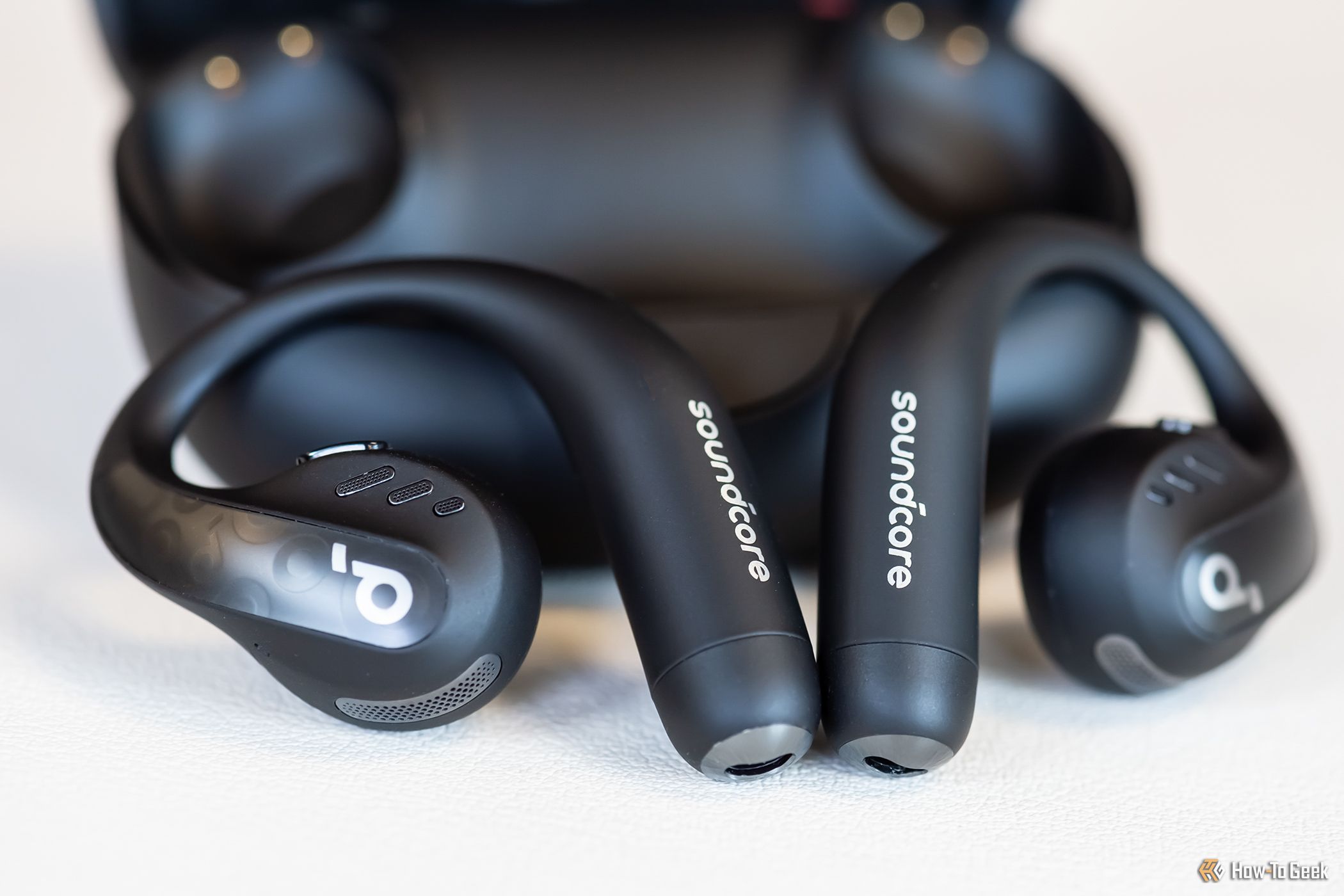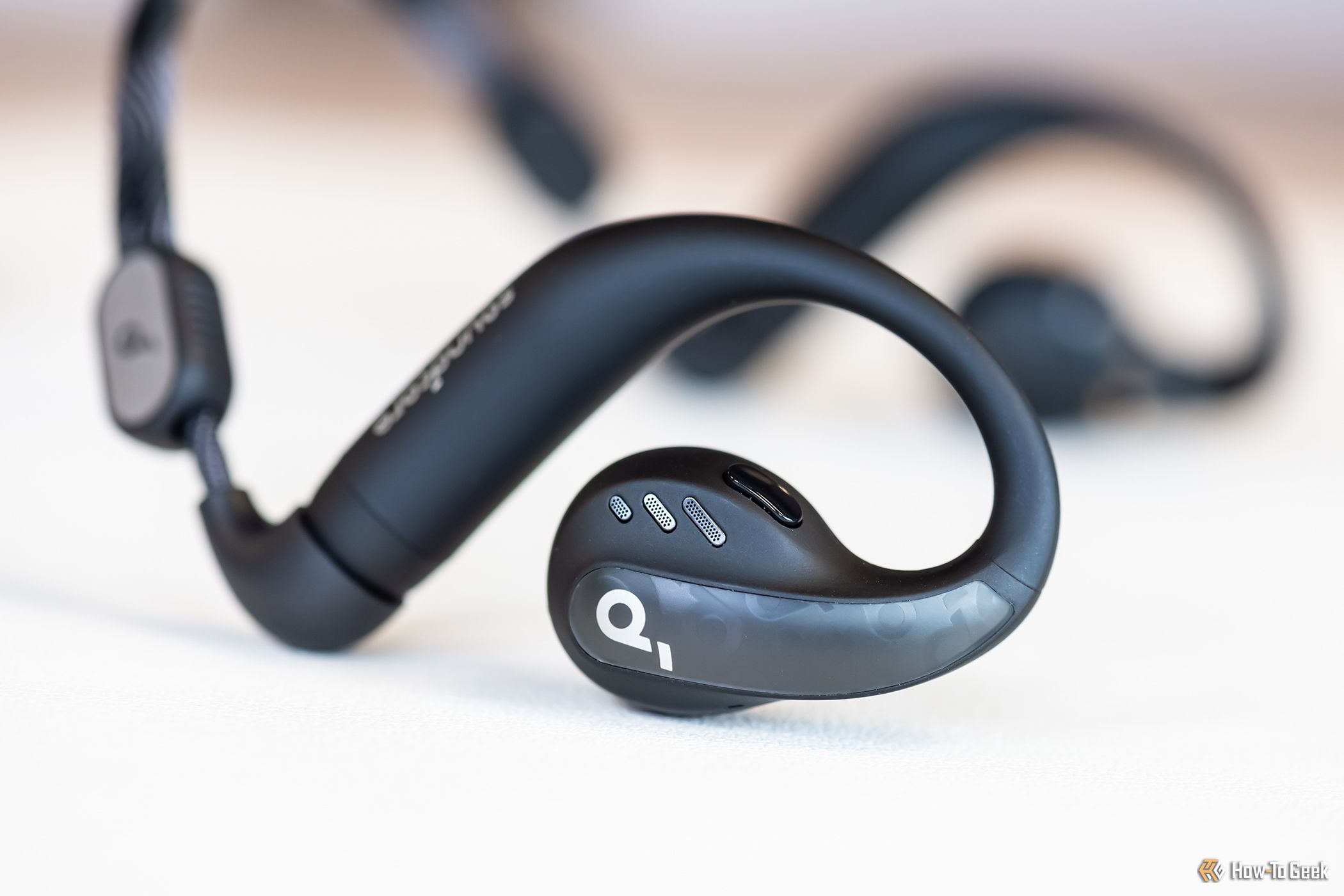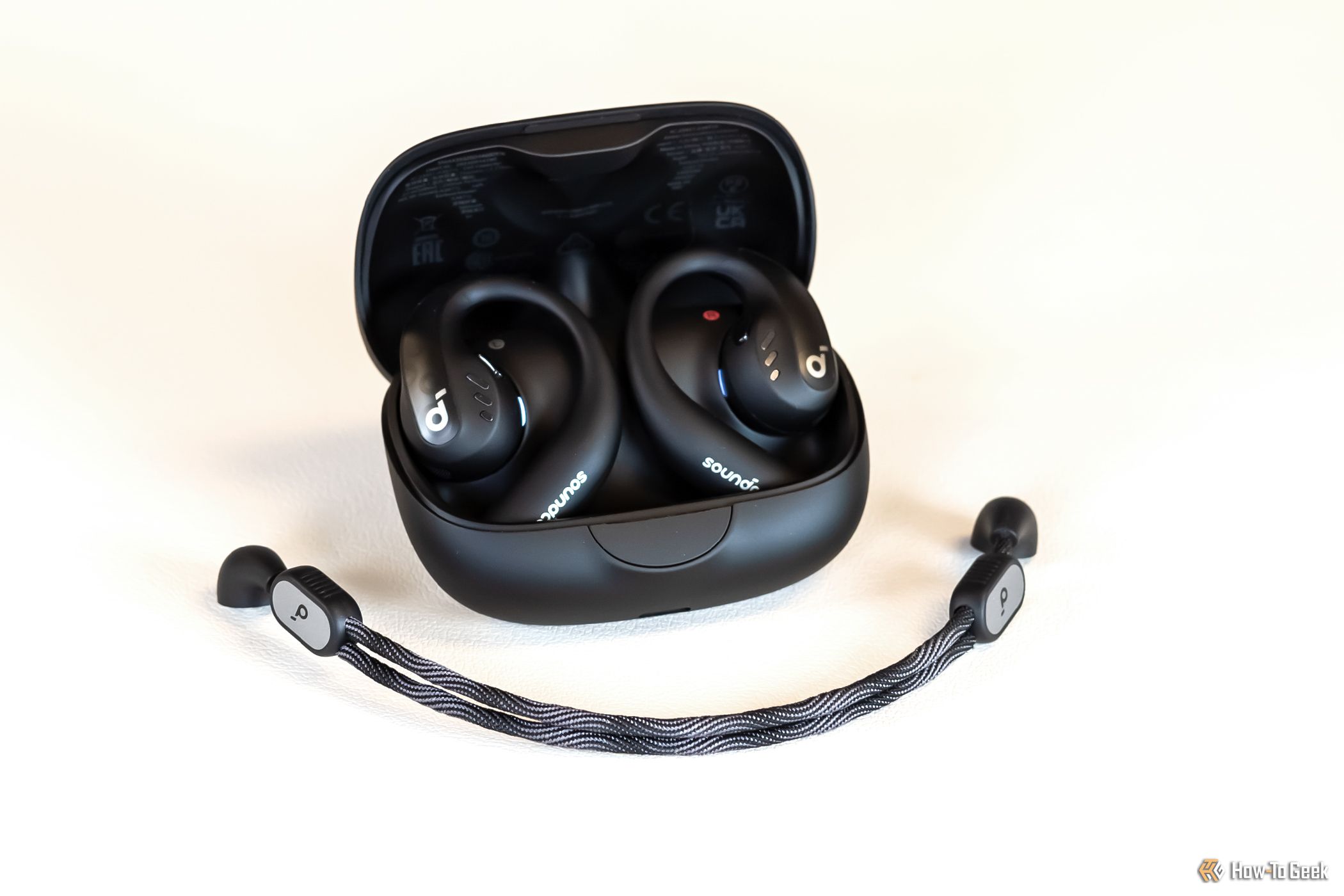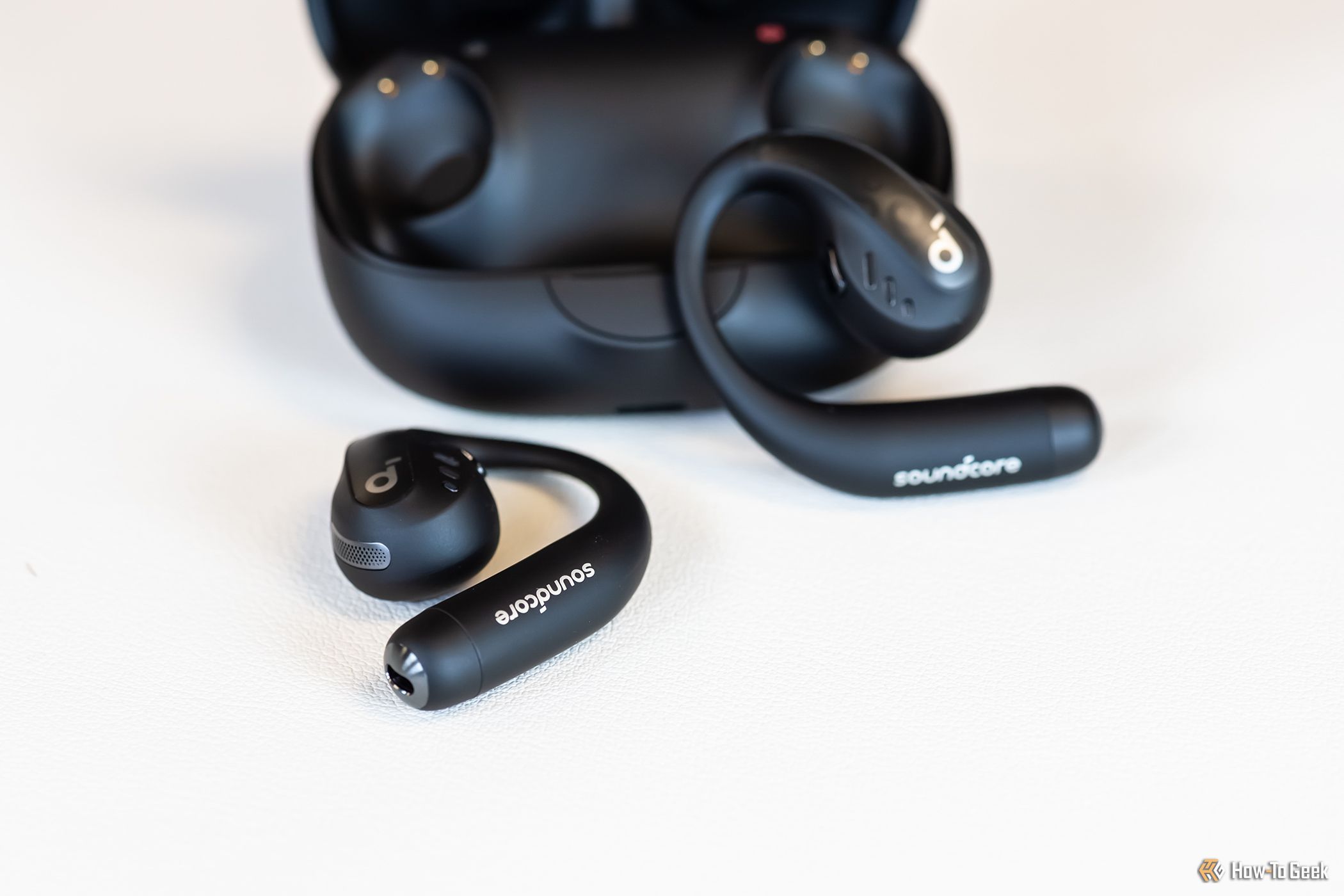Key Takeaways
- The Soundcore Aerofit Pro open-ear headphones offer a comfortable fit and provide a breathable listening experience.
- These headphones deliver better audio than ones using bone conduction.
- The media controls are lacking and may require using the Soundcore app, but the sound quality is robust and suitable for various types of content.
These Soundcore Aerofit Pro open-ear headphones from Anker leave your ears unplugged for awareness without heavily sacrificing audio quality. So, if you were considering bone-conducting headphones, these are probably a better option that have a similar desired effect. Music will sound better from these, which could provide more motivation during intense workouts.
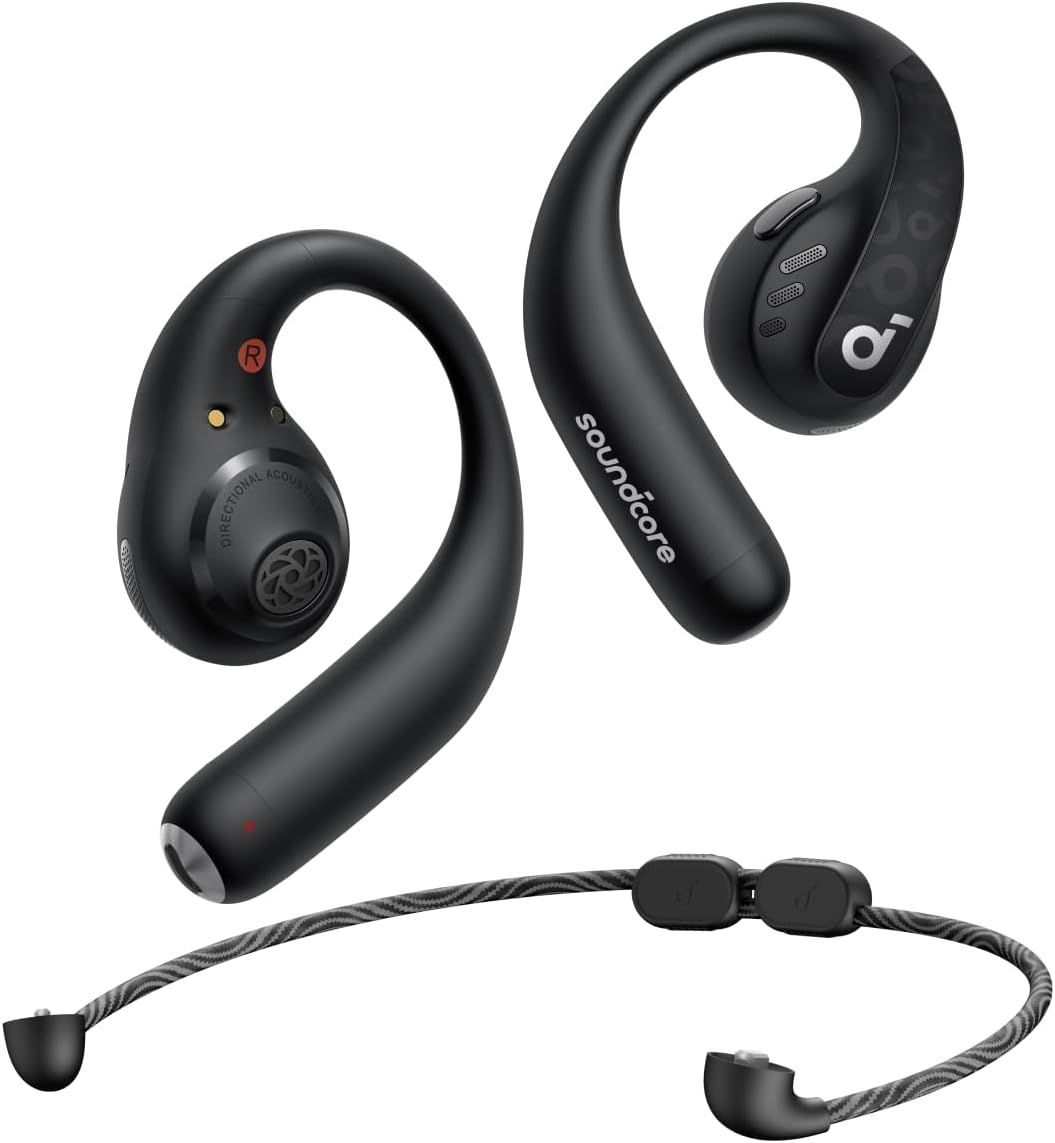
Anker Soundcore AeroFit Pro
AeroFit Pro open-ear headphones utilize a non-intrusive design to eliminate discomfort and allow you to enjoy a breathable listening experience. Air conduction delivers richer audio, superior to that of bone conduction.
- Battery Life
- 14 hours
- Supported codecs
- LDAC
- IP Rating
- IPX5
- Driver Size
- 16.2mm
- Weight
- 7.84oz
- Frequency response
- 20-20kHz
- Maximum play time (overall)
- 46 hours
- Comfortable fit
- Loud and full sound
- Neck band included
- Default media controls were unconventional
- Bulky charging case
The Benefits of Open-Ear Headphones
The Aerofit Pro are closer to being earbuds than headphones, but can you call them earbuds even if they don’t go into your ears? Each piece wraps around your ear and tucks its driver right next to the canal opening to give you the most sound possible without actually sticking anything inside.
This design is great for athletes, like runners, who need awareness of street noise and other surrounding dangers. If you can’t find earbuds that fit in your ears or just don’t like things plugging up your ears, these could also be a viable solution.
The wrap-around look isn’t particularly fashionable compared to other personal audio devices, but it’s fine. I found its design to be effective, more than anything. They were comfortable on all my runs, which ranged from three to six miles in length. I never felt ear fatigue or poking or prodding on any part of my ear.
I found other similar open-ear headphones, like Bose’s discontinued Sport Open Earbuds, less comfortable than the ones from Soundcore. The Aerofit Pro certainly borrows a lot of inspiration from the Sport Open Earbuds, but the texture was smoother with a better curvature, at least for my ears.
Even though these were easy to wear, the right one initially felt loose. It never fell off, however. Eventually, I became accustomed to how they felt resting on the back of my ears.
I used the included neck strap that links both pieces together, so I was hardly worried about a piece falling off and being damaged. The strap plugs into the end of each one and then can be adjusted to accommodate different-sized people. I didn’t mind using the strap, but I did give it up after a few initial runs.
Each piece needs to be disconnected from the neck strap to fit inside the charging case. That ultimately kept me from using it more. There’s also no good way to travel with the strap, as it doesn’t fit in the already large charging case.
Soundcore advertises 14 hours of battery life, or 46 hours with the help of the battery case. I didn't track the exact time these lasted on a single charge, but it was easily more than enough for several weeks of running based on my times.
Media Controls Are Lacking
Sound quality is critical for headphones, but I’d argue that it takes a backseat with devices used for fitness and exercise. The fit, volume, and controls are often key for making sure the earbuds or headphones serve you on the road, at the gym, or working out in the garage.
With that foundation, I was less than impressed by the default media controls for the Aerofit Pro headphones. A single press on the sole button on the right earpiece is set to raise the volume while the left one is set to lower the volume. A double press on either one will pause or play audio.
It’s not a universal standard, but most earbuds use a single press for pause and play, a double click for skipping, and three for other, miscellaneous controls. To change the controls you’ll need to use the Soundcore app, which is available for iPhone and Android.
I initially connected the Aerofit Pro directly to my Apple Watch, so I was stuck with the default controls until I paired the product with my phone and switched up the presets. (By the way, only single and double presses are configurable in the app.)
Inside the app, you can also change the EQ and tweak settings like auto-off timing, but otherwise, the app is sparse and not worth using if you can live with the default controls.
These Open-Ear Headphones Sound Better Than Bone-Conducting Ones
I stuck with the default EQ because it sounded the most robust for the variety of content I listened to—podcasts and pop music. The Aerofit Pro open-ear headphones feature 16.2mm titanium-coated drivers that pump the audio into your ears.
The songs I listened to were full, with plenty of range. Although some minor details were lost to outside noises from the open-ear design, I still felt like I could hear the majority of the instrumentation well. The vocals on songs were clear and present enough not to miss any witty lyrics.
While bone-conducting headphones are often tinny and hollow, comparatively, the Aerofit Pro were not. I wouldn't call the bass here thumping, but it's close. One of the most surprising things was that some of the spoken word content I listened to, like podcasts and audiobooks, were almost too full-bodied. It wasn't concerning enough to be an issue, but it was a bit unexpected for an open design.
Rather than mess with the EQ bands myself, I would have liked a preset for vocals. But other than that, the sound was perfectly adequate. The Aerofit Pro are great for open-ear headphones, but only about average compared to other personal audio products in the $150 range.
In terms of the microphone quality, the Aerofit Pro handled my voice well in a quiet environment. It sounds natural. In a noisy environment, however, there was much more compression and digital artifacts.
Price and Availability
The Anker Soundcore Aerofit Pro open-ear headphones retail for $169.99 (£149.99 in the U.K.) and come in black or white. If you're looking to save some money, the non-pro Aerofit model is priced at $129.99. Those feature less battery life, smaller drivers, and a less fancy charging case.
Should You Buy the Anker Soundcore Aerofit Pro?
There’s no reason anyone in the market for new earbuds couldn’t use the Anker Soundcore Aerofit Pro open-ear headphones. Still, ultimately, they are a more specialized product aimed at active people.
That’s also the space they excel in and are worth their compromises. Aerofit Pro headphones are chunky, with a big bulky charging case, and don't have the most detailed audio quality, but none of those things distract from not having little buds plugging up your ears. I found these comfortable enough that I would choose them over any of the bone-conducting options. I would also suggest them for people who have trouble keeping earbuds in.
The $170 retail price is steep for exercise-only headphones. If you're fine with the size and style to use as your primary headphones, then these are a much better value.

Anker Soundcore AeroFit Pro
AeroFit Pro open-ear headphones utilize a non-intrusive design to eliminate discomfort and allow you to enjoy a breathable listening experience. Air conduction delivers richer audio, superior to that of bone conduction.


